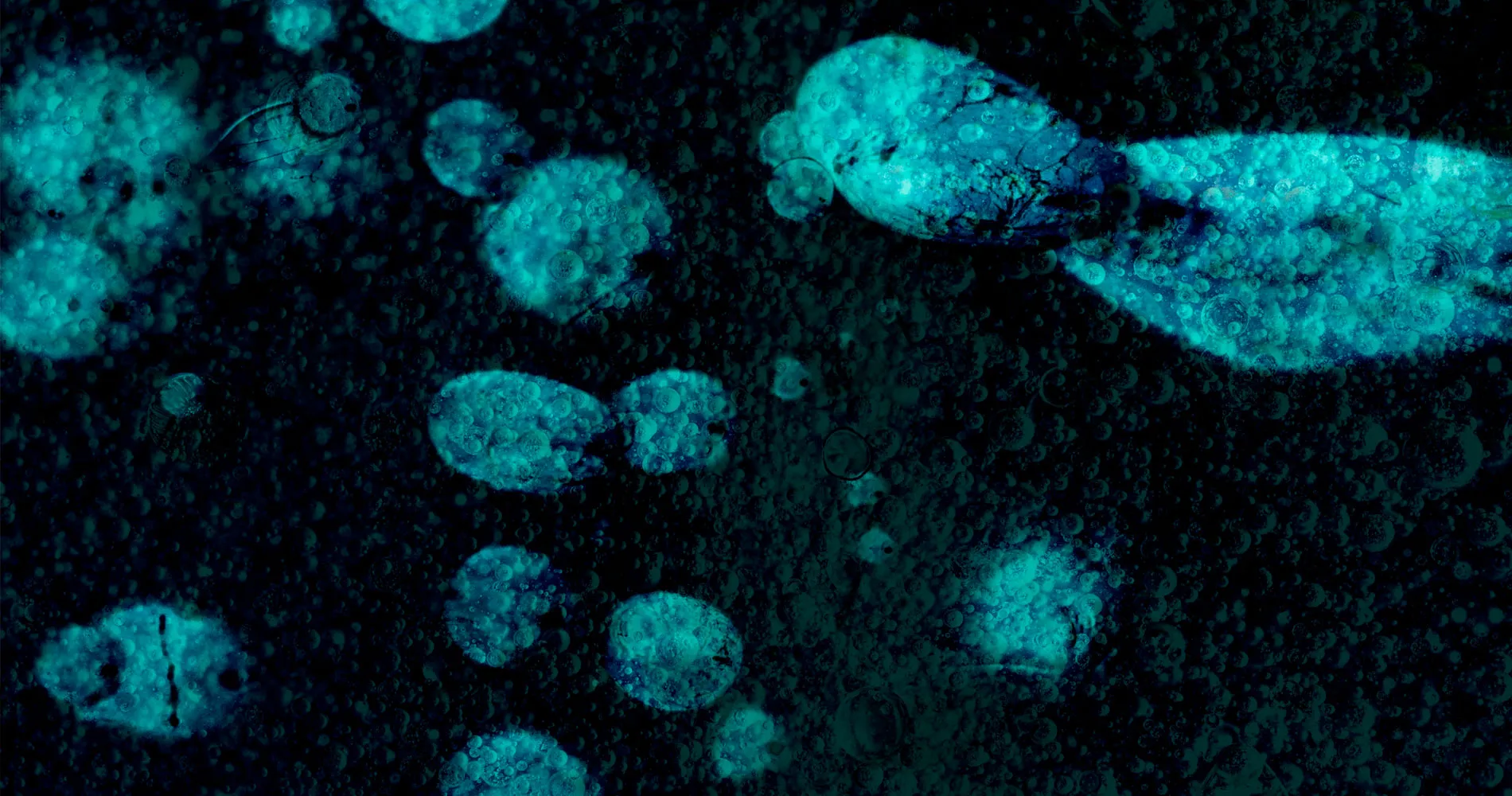The recent discovery of “dark oxygen,” which is produced deep in the ocean where sunlight does not reach, challenges previous beliefs that oxygen was created solely through photosynthesis. This finding has implications for the mining of polymetallic nodules on the ocean floor, which are believed to produce this oxygen through a process called saltwater electrolysis. The study has sparked debate over the future of deep-sea mining and its potential effects on ecosystems and global oxygen levels.
Silvia Caschera
16 September 2024
Arabic version | Chinese version | French version | German version | Spanish version
We have always taken it for granted that the oxygen on our planet is produced exclusively by photosynthesis, but we are now discovering that this might not be the case. In a groundbreaking revelation that challenges our understanding of marine biology and chemistry, scientists have discovered the presence of “dark oxygen” deep within the ocean’s abyss. This form of oxygen, produced without sunlight, has been found in areas so deep that light cannot reach, suggesting that there are alternative pathways for oxygen production in Earth’s oceans.
Oxygen is one of the fundamental elements for life on Earth as we know it today, and when it suddenly appeared in the planet’s atmosphere 2.5 billion years ago, it cast many doubts on its origin. Conventional theories attribute its appearance to the action of photosynthetic organisms, especially plants and algae.
However, a new study published in Nature Geoscience on 22 July 2024 has come to a new and revolutionary conclusion. The study which was the result of an exploration conducted a decade ago, disproves age-old theories and rules out photosynthesis as source of oxygen. The discovery, made almost by chance, took place at a depth of 4000 meters in the Clarion-Clipperton Zone, an expansive area in the Pacific Ocean between Hawaii and Mexico. A team of scientists led by Professor Andrew Sweetman of the U.K.’s Scottish Association for Marine Science noticed that their instruments indicated the presence of oxygen in samples collected from the seabed. At the time, the team thought it was a technical problem, but further analysis, even with different instruments, revealed to them that there was no mistake and the collected samples, composed of a mix of different minerals, did indeed contain oxygen.
These polymetallic nodules are nothing more than lumps of metal that resemble coal but are composed of valuable resources like lithium, cobalt, and copper. The nodules act as a chemical battery, producing oxygen through a process known as seawater electrolysis. This process involves an electrical potential difference that separates water molecules into hydrogen and oxygen. It is therefore possible that life arose not on the surface, thanks to sunlight, but at the bottom of the oceans, thanks to “electric rocks”.
The implications of this discovery are profound. It suggests that there may be alternative pathways for oxygen production in Earth’s oceans, which could have significant consequences for our understanding of life’s origins and the potential for life in similar environments elsewhere in the universe. The existence of dark oxygen, in fact, support the opinion that if life can exist in the extreme conditions of the ocean floor, then similar environments on other planets or moons could harbor life. This discovery could guide future missions in the search for extraterrestrial life, particularly on icy moons like Europa, where subsurface oceans may exist.
The presence of dark oxygen challenges the long-held belief that photosynthesis is the primary source of oxygen in the ocean. It opens up new possibilities for understanding how life can thrive in environments previously thought to be inhospitable. This could lead to the discovery of new species and biochemical processes that have adapted to these unique conditions. Understanding how dark oxygen is produced and its role in the ocean’s chemistry could also provide valuable insights into global climate change. The ocean plays a crucial role in regulating Earth’s climate, and any new factors affecting its chemistry are important to consider in climate models.
As scientists continue to explore this mysterious source of dark oxygen, they are also considering its impact on future deep-sea mining prospects. The nodules that produce dark oxygen, in fact, are not only a source of this vital element but also hold valuable minerals that could be crucial for technological advancements towards a green economy. It is crucial to balance the economic benefits with the preservation of these unique ecosystems.
The study has sparked debate at the United Nations’ International Seabed Authority (ISA) negotiations, with some countries calling for caution and a moratorium on deep-sea mining until its environmental impacts are better understood. The Metals Company, a Canadian company which is involved in deep-sea mining, has disputed the findings, claimed a flawed methodology and questioned the credibility of the journal Nature Geoscience. The controversy highlights the need for further research and careful consideration of the potential impacts of deep-sea mining.
“We are discovering that there are various sources of oxygen on the planet, we don’t yet know how relevant they are, how much they produce, and what impact they have had on the planet’s past and the spread of life, but they are certainly discoveries that force us to reconsider some things we thought were assumptions”, noted microbiologist Donato Giovannelli, professor at the University in Naples Federico II, Italy.
Ocean Action 2030 is a “voluntary coalition dedicated to supporting countries in their aim of building a sustainable ocean economy through the development and implementation of Sustainable Ocean Plans“. Its members are leading institutions which provide the technical and financial assistance to countries in order to develop and implement their Sustainable Ocean Plans, which aims to advance long-term economic and social development, while also promoting the health of marine ecosystems. Friends of Ocean Action 2030 highlight that the ocean’s ability to perform these functions depends on its health and vitality.
The ocean plays an essential role in sustaining life on our planet. It helps regulate temperatures, shields us from storms, supplies food, supports millions of livelihoods, and produces half of the Earth’s oxygen. It is the responsibility of the global community to maintain its well-being.







